By Commodore AJ Singh, IN (Retd.)
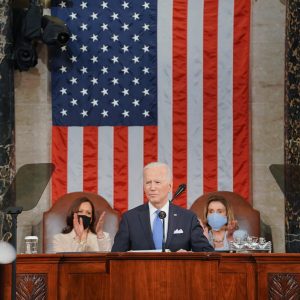
New Delhi. 30 April 2021. The tradition of assessing a US President’s first 100 days in office began with President Franklin Delano Roosevelt who was keen to distance himself from his predecessor Herbert Hoover’s policies. In his first 100 days he signed 76 bills into law. In the aftermath of the Great Depression his ‘New Deal’ became a benchmark achievement.
As President Biden completes 100 days in office, he is drawing comparisons with FDR and his USD 1.9 Trillion stimulus package is being hailed as a bigger achievement than even the ‘New Deal’. He is being projected as a transformational global leader. In his 100 days he has set in motion most of the goals he set for himself on the domestic as well as on the global stage. Faced with the challenge of retrieving USA’s lost prestige and returning the country to its pre-eminent status as a connected global superpower while simultaneously addressing the internal challenges, he not only has to heal the divisive chasm created by his predecessor within the country but also has to regain the USA’s international credibility with a return to multilateralism and rebuild the trust of USA’s alliance partners and friends across the globe.
He began with a series of 42 executive orders to kick start his presidency , the most by any recent President and undid 62 policies of his predecessor, also a number unprecedented in recent US presidential history. He has also made good on his two major global health concerns – tackling the pandemic in the short term and addressing climate change in the long term. On the former, he has almost brought the USA back on even keel in its battle against the pandemic with the CDC reporting that as of the morning of 27th April, 29.1 % of the US population was fully vaccinated and it is believed that more than 52% have received their first shot. This is significant because it provides the USA enough slack to extend its support to other parts of the world including India. Re-joining the World Health Organisation at this juncture as the world grapples with the pandemic was another very positive step. It is true that the WHO had much to be faulted for at the beginning of the pandemic but the answer lay in strengthening it from within and not abandoning it to allow its vulnerabilities to be further exploited.
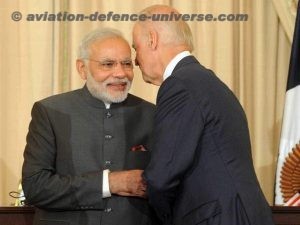
The President had also accorded a very high priority to climate change and in the run up to the Presidency frequently reiterated his commitment towards addressing this existential challenge. Amongst his first few actions was re-joining the Paris Accord on Climate Change. However, the US track record of blowing hot and blowing cold on addressing the core climate change issues, further exacerbated by his predecessor, will be a challenge that will require more than just a commitment. The USA will have to take global leadership and be seen walking the talk itself. Meeting the ambitious carbon emission reduction and clean energy targets within the USA will be a challenge and will put President Biden’s credibility and legacy to the test. The US led Climate Change Summit held on 22-23 April (in which Prime Minister Modi also participated) was preceded by the visit of his special envoy on climate change John Kerry to India and China, the world’s second and third largest emitters. This was a positive step to address the fundamental differences in perception of carbon equity and carbon justice between the developed and the developing world which could prove to be a stumbling block in the future as it has been in the past.
President Biden announced the USA’s return to multilateralism at the Munich Security Conference on 19 February 2021 with his statement “America is Back”. This was met with a degree of scepticism, particularly from Germany and France amongst his European allies who remain wary of the USA’s reliability and long term commitment to the transatlantic alliance. This is the unfortunate legacy he has inherited and it will require his actions to speak louder than his words in reassuring the US allies and partners across the globe that the last four years were an aberration and not the norm.
On 04 March 21, the White House released an ‘Interim National Security Strategic Guidance which in brief, highlighted the USA’s return to the global centre stage by ‘restoring US credibility and reasserting forward-looking global leadership’ and ‘will ensure that America, not a more assertive and authoritarian China, sets the international agenda’. Covering the current global challenges, both military and otherwise, it provides an outline of the US foreign and security policy trajectory over the next four years. While emphasising the importance of NATO and its western alliance partners, the document clearly identifies China as the “only competitor potentially capable of combining its economic, diplomatic, military, and technological power to mount a sustained challenge to a stable and open international system.”
China, the Indo-Pacific and the Quad
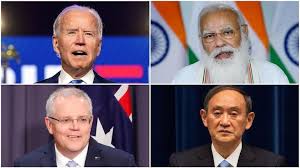
In the last couple of years, the USA has all but named China as its premier adversary in a series of documents and statements emanating from the Pentagon and the State Department. This document further reinforces that viewpoint. Contrary to expectations that this administration will be less strident towards China than the more abrasive Trump-Pompeo approach, this President has been equally critical of China. No mention of US security challenges goes by without a specific reference to China.
Building a strong network of security alliances, alignments and partnerships in the Indo-Pacific is integral to US interests in the region and its efforts to contain China. Infact, the USA’s Indo-Pacific policy seems increasingly to be anchored in the Quad which has come a long way since its humble resurrection in 2017. Elevated to the Foreign Minister’s level by President Trump, it has been further elevated by President Biden who took the initiative of holding a virtual Summit with his counterparts from the other three countries. The Quad has so far distanced itself from being regarded as a security construct aimed at containing China and has a clearly stated objective of ensuring a Free and Open Indo-Pacific and maintenance of a rules-based international order. Its mandate now also includes cooperation in combating the pandemic and developing resilient supply chains amongst others.
China, for obvious reasons has made no bones about its aversion to the Quad and views these developments as inimical to its interests. It has thrown down the gauntlet to the USA and is challenging the US primacy not only in the region and subsequently the world. Hence, tensions between the two are constantly running high and an eventual confrontation is not an ‘if’ but a ‘when’.
There is also no doubt that the Chinese belligerence in the region and its blatant disregard for existing conventions(UNCLOS) greatly undermines regional security and is a cause for concern for all countries with interests in the region including India .It questions the validity of the West ( read USA) led rules-based international order and clearly intends to reorient that into one with ‘Chinese characteristics’ which has ominous portents for all.
Until recently, it was mainly the USA that used to unhesitatingly name China as a concern However, China’s behaviour in the last couple of years has led to both Japan and Australia hardening their positions. Australia too, has been openly critical of that country and recently took the unprecedented step of cancelling four agreements with China under the Belt and Road Initiative.
India takes a different position. Firstly, it is the only non-Pacific power in the group and secondly, it is the only one of the four which shares a land border with China. Infact, the Sino-Indian relationship has, since ancient times been defined mostly by the land border with the maritime dimension being relatively recent though growing exponentially in importance.Last year’s border stand-off with China across the line of Actual Control which remains unresolved despite the bitter winter in the high Himalayas and which at one stage seemed dangerously close to escalation highlighted the need to develop a carefully calibrated approach towards China which may at times be at odds with India’s maritime partners in the region. The close Sino-Pak relationship too has grave security implications for India across its northern and north western frontiers as well as its maritime interests.
As the only Indian Ocean power in the construct, the US approach to India will also have to factor this into its calculus.
The US-India Relationship
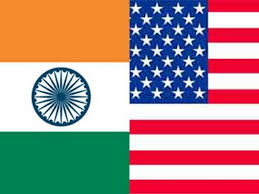
President Biden has always supported a healthy US-India relationship and in years past had described it as the defining partnership of the 21st century. While this relationship is unlikely to resort to the heady ‘Howdy Modi, Namaste Trump’ histrionics, it is likely to focus more on substance than optics. The interim strategic guidance document alluded to earlier in this article highlights the importance of a deeper US relationship with India. Hence the momentum of the US-India relationship and its upward trajectory over the last 15 years since the signing of the civilian nuclear agreement which was a watershed moment in the bilateral relationship is set to continue. The importance of an economically and militarily strong India is integral to the USA’s Indo-Pacific strategy to effectively counter-balance China in the region.
In his first 100 days, despite his busy internal and external agenda the President ensured that he was able to engage with India through his personal telephonic conversation with the Indian Prime Minister, the visit of his special envoy on climate change John Kerry prior to the Climate Summit and the visit of the US Secretary of Defence to New Delhi on his way back from Tokyo and Seoul, two of the USA’s most important allies in the Indo-Pacific. This level of engagement so early in the Presidency reflects a shared understanding of the importance of this region for both countries and is manifested through greater defence cooperation, deeper multi-sectoral engagement, cooperation in the cyber and space domains, information sharing and co-development of advanced and disruptive technologies amongst others.
As an emerging economic and military power and the pre-eminent power in the Indian Ocean region which it has defined as its primary area of interest, India will have a critical role to play in shaping the regional outcomes.. The USA on the other hand will perhaps have to focus more attention on countering China in the waters east of the Malacca Straits and will therefore expect India to take up the slack in the Indian Ocean. A cooperative approach to regional capacity building is therefore an inescapable imperative. India has purchased more than USD 20 Bn worth of sophisticated military hardware for its army, navy and the air force which has addressed some critical gaps in India’s full spectrum combat capability. Various initiatives to further augment this capacity are underway. However, a discordant note which President Biden must address has been the reluctance of the USA to part with any meaningful technology. Lofty initiatives like the Defence Trade and Technology Initiative (DTTI) etc. have been less than satisfactory. The US must appreciate that it is getting preferential treatment in the highly competitive and price sensitive Indian defence market and is able to sell its expensive hardware without navigating the complex Indian Defence Acquisition Procedure. US defence OEMs are consulted far more on policy issues than OEMs from countries which choose to be less politically engaged in defence sales. As a strategic partner, the US must understand that import dependence is a strategic vulnerability which India is trying to mitigate and must therefore cooperate.
The visit of the US Secretary of Defence to New Delhi in February on his way back from Tokyo and Seoul, Washington’s two most important allies in the Indo-Pacific underlined the significance attached to India as a major defence partner. Here too, he was evasive on most issues of consequence and his decision to fly to Afghanistan from new delhi took the Indian establishment by surprise and was not appreciated.
Amongst the important topics discussed during the Defence Secretary’s visit was the further strengthening of the four foundational agreements signed between the US and India viz,. GISMOA (General Security of Military Information) , LEMOA ( Logistics Exchange Memorandum), COMCASA ( Communication Compatibility and Support Agreement )and BECA (Basic Exchange and Cooperation Agreement). These form the bedrock of the military relationship between the two countries and provide a comprehensive depth to the security cooperation across the strategic, operational and tactical domains.
The USA’s return to multilateralism is a welcome step. India and the US have an opportunity to work closely together during India’s non-permanent membership of the UN Security Council followed by its Presidentship of the G-20.
Areas of Concern
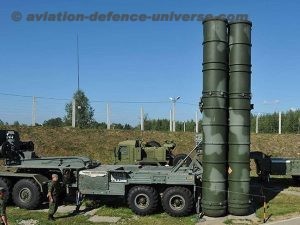
However, while these areas of convergence are further consolidating this relationship there still remain areas of concern which, though inevitable in any relationship, need to be addressed ; infact the strength of the relationship will lie in both sides understanding the sensitivities and imperatives of the other while taking the relationship forward. From an Indian perspective, one of the issues of concern is the US reluctance to waive CAATSA (Countering America’s Adversaries through Sanctions Act). The US is well aware of India’s deep and enduring relationship with Russia and also that India has committed to acquiring the S-400 advanced AD system from Russia. In the larger interests of the strategic dimension of the US-India relationship, a suitable solution needs to be found. There has also been no relaxation on the continuing trade and tariff issues ; this is another legacy of the Trump presidency. India and the US must also work towards finding common ground on climate issues. A deeper understanding of each other’s positions and a convergence on the way ahead would go a long way in generating a global response. India has been at the forefront of various initiatives and leads the International Solar Alliance of which surprisingly, the US is not a member.
On the security front too , the US expects a greater involvement from India in the Indo-Pacific including participation in joint patrols which India has rightly refrained from. India has considerable maritime interests in the western Pacific and Indian Naval ships are often deployed there. However, that region already has deep military alliances and large militaries whereas India has less support in the ‘Indo’ of the Indo-Pacific and would rather focus its attention on ensuring the security of its strategic maritime neighbourhood.
The current US-China tension notwithstanding, the US cannot distance itself from the depth of the US-China economic relationship and the huge trade surplus ( about USD 320 Bn) in China’s favour. Unlike the Cold War where ideology divided the world into distinct blocs, globalization and trade dependencies preclude economic isolation of any one country and most definitely not that of China. The Biden administration, which is expected to take a more pragmatic approach towards the economy in the larger interest of the country will therefore need to reassure India through its economic policies and diplomatic outreach that the Indo-US relationship will not be impacted by the trajectory of US-China economic relations.
The inherent maritime orientation of the Indo-Pacific and its focus on the Pacific leads one to pay less attention to the western extremity of this region and its continental dimension. However recent developments in Iran and Afghanistan, to name just two are going to impact regional security and India’s responses.
Iran President Biden has indicated that he is not averse to reviewing the US withdrawal from the JCPOA. Infact President Trump’s actions in trying to isolate Iran actually proved counter-productive as China moved swiftly to fill the power vacuum in the region. A Chinese presence in Iran does not bode well for India which has seen its traditionally historic relationship with Iran being subjected to undue pressures. The unhindered passage of oil tankers to and from the Straits of Hormuz is critical for India’s and the region’s energy security. A Chinese naval presence at ChahBahar, Bandar Abbas or any other port in the vicinity of the Straits of Hormuz will not only give it a stranglehold over the tanker traffic thus jeopardising India’s energy security but will also be able to challenge India’s pre-eminent position in the western Indian Ocean. This will also neutralise China’s Malacca Dilemma and create a Hormuz Dilemma for India and many of the USA’s allies and partners in the Indo-Pacific dependent on oil supplies from the Arabian Gulf. With its control over Gwadar and its ability to base aircraft carriers in Djibouti, the PLA Navy will be a formidable presence in the Indian Ocean.
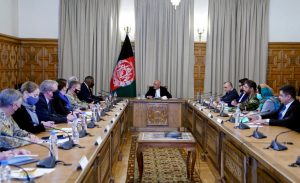
Afghanistan. President Biden’s decision to effect a complete withdrawal of US troops from Afghanistan by 11 September 2021, despite professional advice to the contrary, to coincide with the 20th anniversary of the tragic bombing of the World Trade Towers in New York will create another power vacuum and have a significant impact on the emerging geopolitical contours in the region. Besides the Islamic Emirate ( as the Taliban refer to themselves) with its state sponsored support from Pakistan, China, Russia, Iran, India and many others would be watching the developments closely. India , despite its strategic location vis-à-vis Afghanistan and its stellar developmental efforts in the country has rarely found a place at the top table in deciding the future of Afghanistan. There is little clarity on how India intends to position itself post the US withdrawal.
The Indo-US bilateral relationship will be critical in shaping the region as the world moves towards multipolarity. The first 100 days of the Biden presidency has given rise to optimism on the future of this relationship. Respect for each other’s positions and a positive and pro-active approach will be the key to its success.
(Commodore Anil Jai Singh is a veteran submariner and the Vice President of the Indian Maritime Foundation. He is keenly interested in matters maritime and speaks and writes on the subject in India and abroad. The views expressed are open source and personal. He can be contacted on ajaisingh59@gmail.com )





























































































































